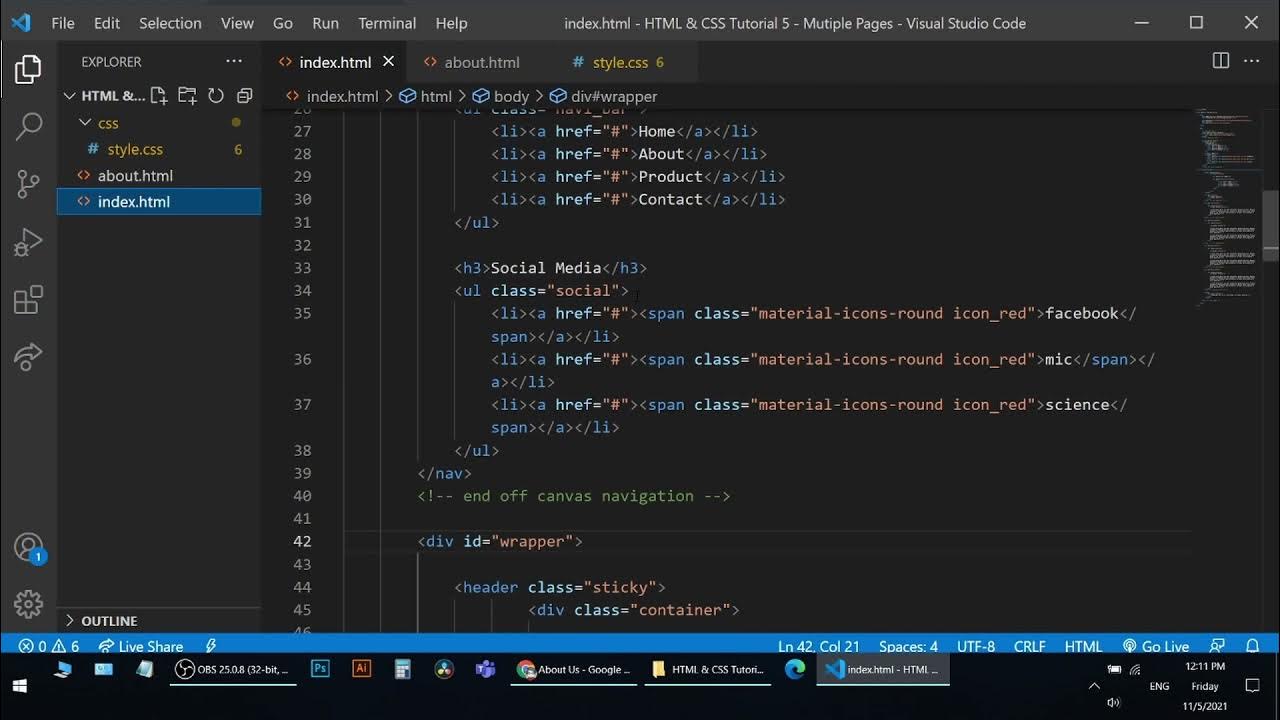How to write more flexible game code
Summary
TLDR本视频提供了编写更清晰代码的实用技巧,强调了应用层次结构的重要性,以及如何通过遵循这一结构来保持代码的灵活性和易于变更。视频中讨论了依赖关系的正确流向、关注点分离、数据与逻辑的结合、使用组件化和依赖注入来提高代码的可重用性和可维护性。此外,还介绍了设计模式的价值,特别是状态机和观察者模式,并鼓励开发者逐步学习和实践,以避免过度理论化。最后,视频强调了迭代改进代码风格的重要性,并提倡在实践中学习和成长。
Takeaways
- 📈 保持代码灵活性和易于变更的关键在于尊重应用层级结构,确保依赖关系仅向下流动。
- 🔄 避免在代码中假设结构,以保持对象的独立性和游戏的灵活性。
- 🤖 保持关注点分离,例如,玩家对象不应直接操作动画的帧或位图数据。
- 🔍 将数据和操作数据的逻辑保持在一起,而不是分离它们。
- 🧱 使用组件来封装功能,而不是创建大型单一对象或过度使用继承。
- 📌 依赖注入可以提高代码的可重用性和灵活性,通过在运行时提供对象引用。
- 🔄 学习设计模式可以避免重复发明轮子,特别是状态机和观察者模式。
- 🔄 迭代改进代码风格,不要一开始就试图掌握所有设计模式。
- 🚀 游戏开发中,即使代码质量一般,能够发布的游戏也比完美但未发布的游戏要好。
- 📚 在遇到痛点时再进行研究和学习,实践中学到的经验比理论更有价值。
- 🔄 通过小项目实践,了解最终产品的样子和学到的经验,为将来做得更好打下基础。
Q & A
什么是应用层次结构?
-应用层次结构是指每个应用无论简单或复杂,都有一个层次结构,这个结构需要被尊重。依赖关系应该只向下流动,而不是向上或横向,这样可以保持代码的解耦和灵活性。
为什么我们应该避免在对象树中假设结构?
-假设结构会导致代码不够灵活,因为一旦改变或破坏了依赖关系,可能会影响到其他部分的代码。例如,如果玩家对象假设总是有一个名为物品的同级对象,那么在所有地方都需要这个物品对象,这限制了游戏的灵活性。
分离关注点是什么意思?
-分离关注点是指保持代码的不同部分专注于它们自己的职责。例如,玩家对象应该只关心高层次的操作,而不是动画的具体实现细节,这样可以在不破坏玩家代码的情况下,后期更改动画的实现方式。
为什么建议将数据和操作数据的逻辑保持在一起?
-这样做可以提高代码的可重用性和灵活性。例如,玩家对象应该告诉动画容器改变动画,而不是直接访问和修改动画容器中的数据。这样可以确保动画相关的代码逻辑集中,便于管理和调试。
组件化有什么好处?
-组件化可以将复杂的对象分解为更小、自给自足的代码块,这样可以提高代码的组织性和可重用性。例如,游戏中需要健康条的多个对象可以使用同一个健康组件,而不是在每个对象上管理单独的变量和方法。
依赖注入是什么?
-依赖注入是一种在运行时而不是编译时提供对象引用的技术。这可以使代码更加可重用和灵活,因为它允许在不硬编码具体对象的情况下,动态地将对象引用传递给需要它们的部分。
为什么学习设计模式很重要?
-设计模式是解决软件开发中常见问题的成熟解决方案。学习设计模式可以避免重复发明轮子,提高开发效率,并帮助开发者更好地理解和解决复杂问题。
状态机和观察者模式为什么很重要?
-状态机和观察者模式是两种非常重要的设计模式。状态机可以帮助管理对象的状态变化,而观察者模式可以使得对象之间的通信更加灵活。它们在游戏开发和软件工程中有着广泛的应用。
如何提高代码质量?
-提高代码质量可以通过迭代改进代码风格、学习设计模式、使用组件化和依赖注入等技术。同时,实践中遇到问题时进行研究和改进,以及在小项目中尝试不同的方法,都是提高代码质量的有效途径。
为什么说发布一个中等质量的游戏比完美代码的游戏更好?
-因为游戏开发的目标是创造出可以被玩家体验的产品。一个即使代码质量不是最优,但能够发布并被玩家接受的游戏,比一个从未完成的完美代码游戏更有价值。实践中的经验和反馈对于长期提高开发技能至关重要。
Outlines

This section is available to paid users only. Please upgrade to access this part.
Upgrade NowMindmap

This section is available to paid users only. Please upgrade to access this part.
Upgrade NowKeywords

This section is available to paid users only. Please upgrade to access this part.
Upgrade NowHighlights

This section is available to paid users only. Please upgrade to access this part.
Upgrade NowTranscripts

This section is available to paid users only. Please upgrade to access this part.
Upgrade NowBrowse More Related Video

Python从入门到精通 第30集 分支结构 单分支结构

How To Paraphrase – 3 Paraphrasing Techniques

Add a ViewModel with @EnvironmentObject in SwiftUI | Todo List #3

Domain Layer Structure & Skeleton | Clean Architecture & DDD From Scratch Tutorial | Part 13

【GPU】GPU架构入门指南 | GPU内部工作原理 | 执行过程 | 如何运行kernel | GPU与CPU有什么不同 | CUDA | Warp

Web Design Tutorial - HTML & CSS Multiple Pages
5.0 / 5 (0 votes)
